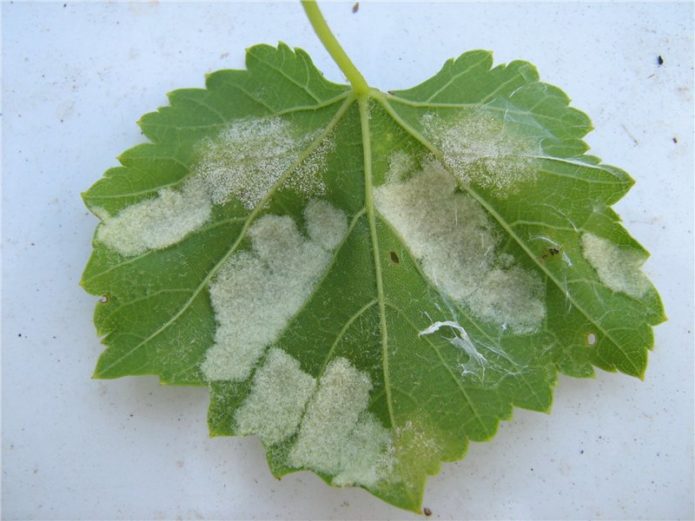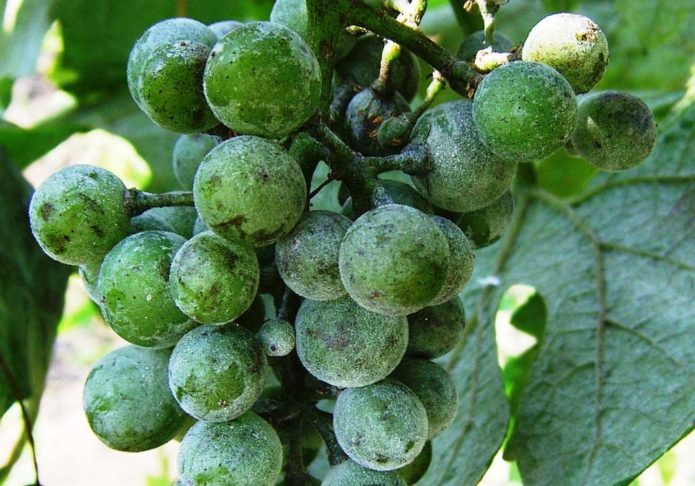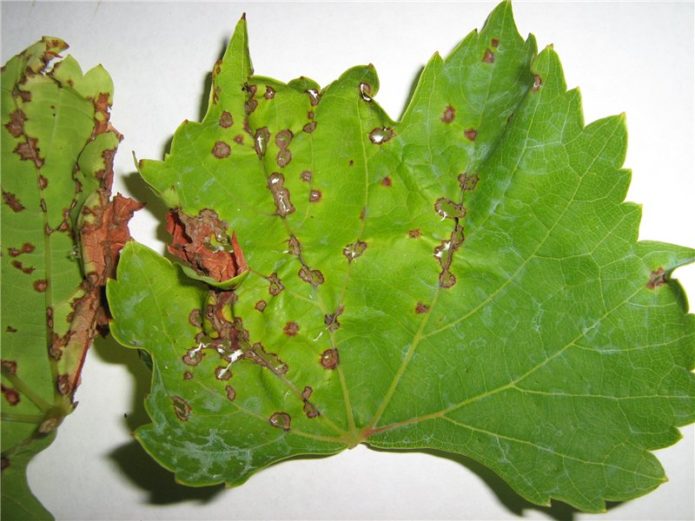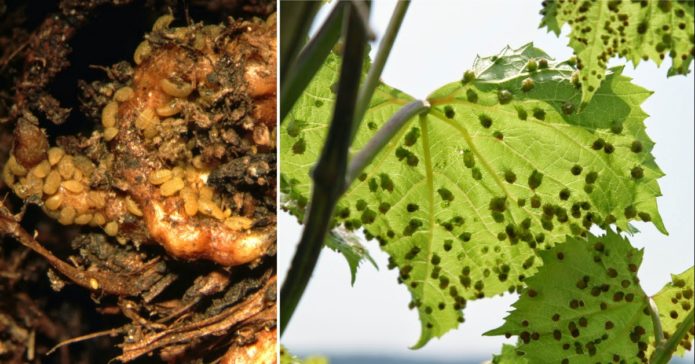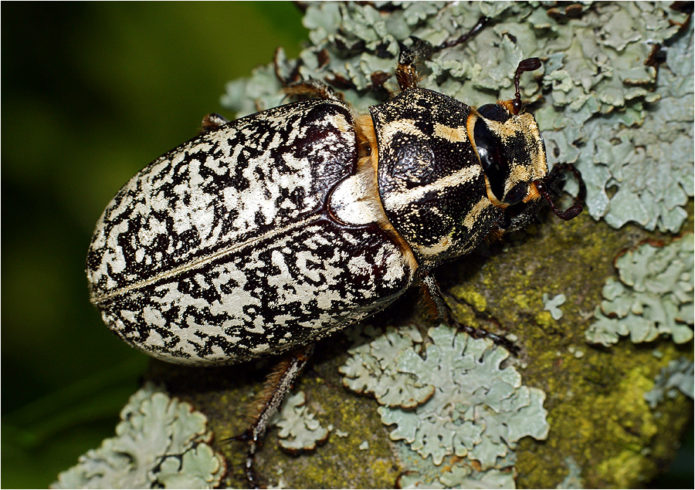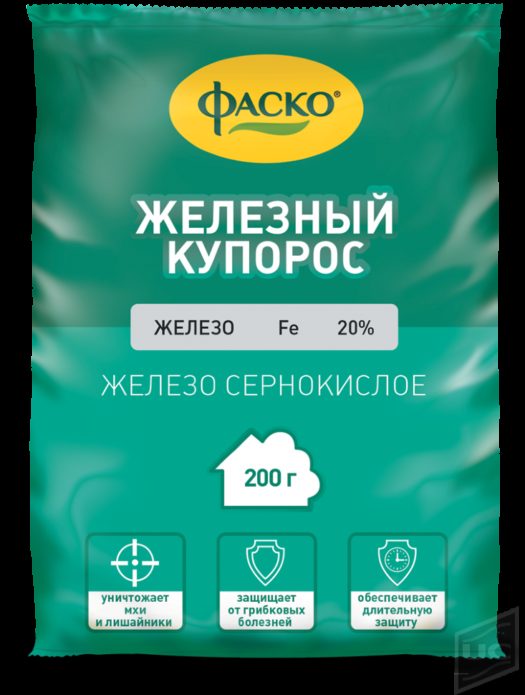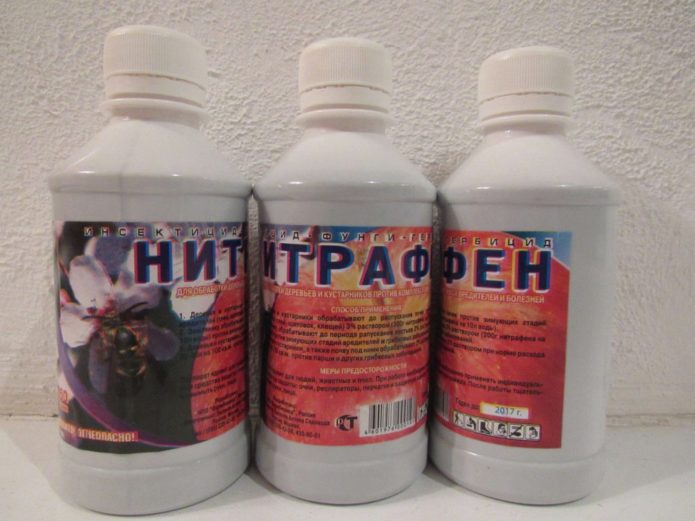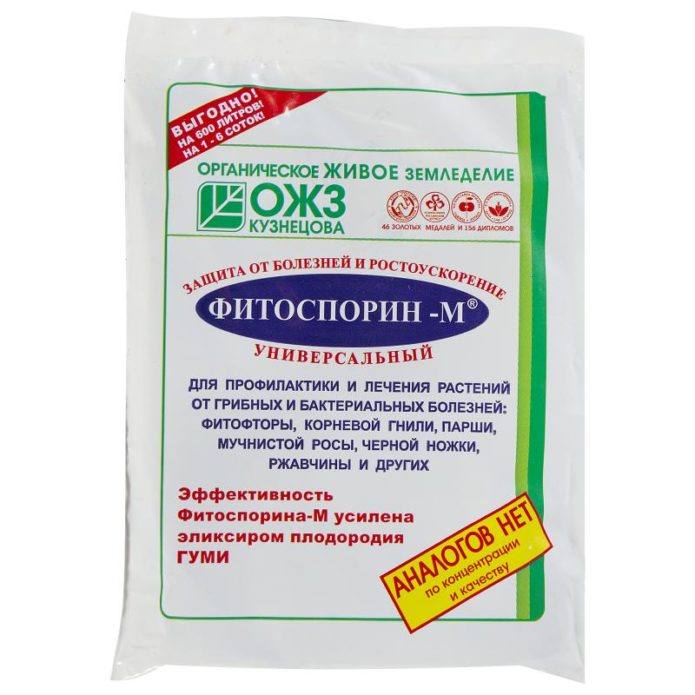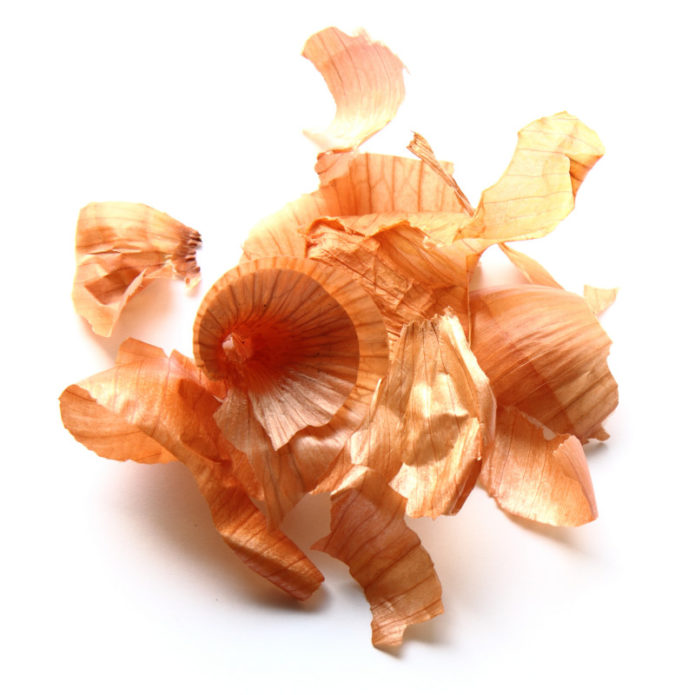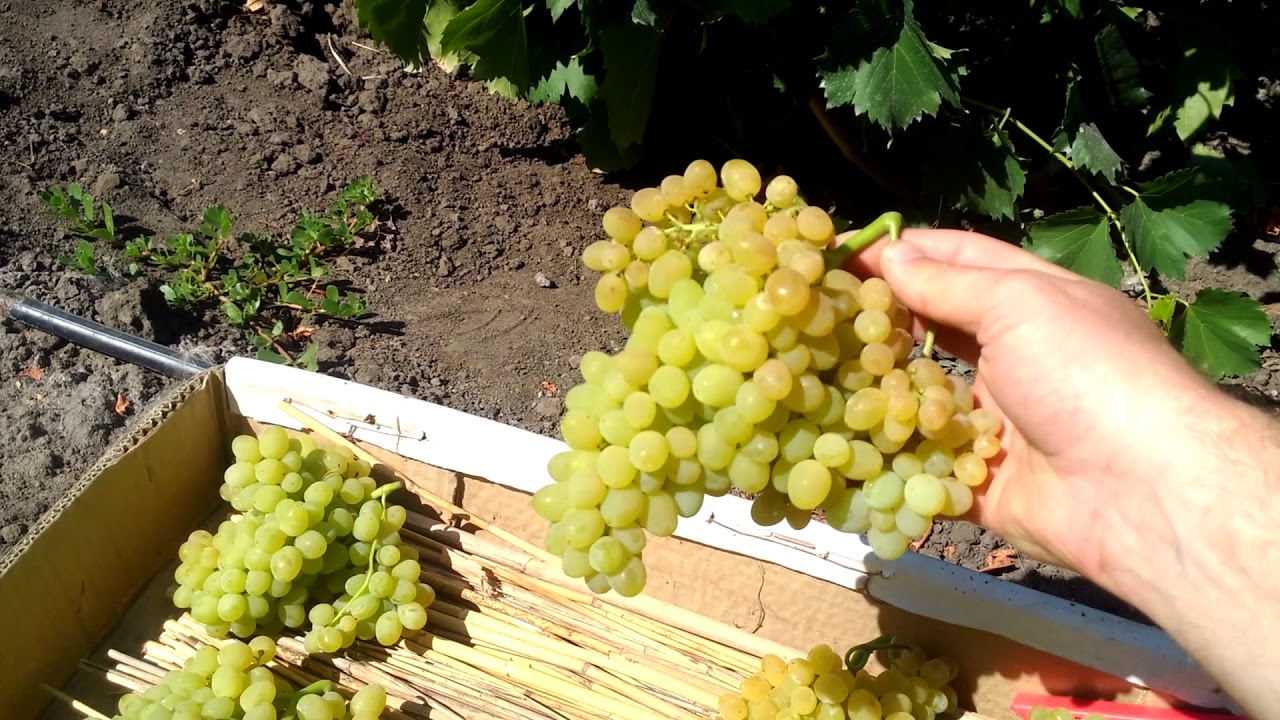Grapes are planted far not only in the south, and it grows beautifully even in the middle lane, and even to the north. However, this culture requires constant care, including preventive spraying from pests and diseases. And the first such event is usually held in early spring, immediately after the release of the vines from the winter shelter.
Content
The main diseases and pests of grapes
Is it possible to do without processing? Unfortunately, it is impossible: grapes have a lot of diseases and pests, and even the most resistant varieties are often exposed to these troubles. The most dangerous diseases of grapes are as follows.
- Gray rot is a fungal disease that does not affect only perennial wood, destroying a fair amount of the crop. Gray rot especially often attacks plants that do not receive qualified pruning, thickened ones.
- Mildew is perhaps the most dangerous of the vineyard diseases and is most aggressive in the rainy seasons. First, oily spots form on the leaves, then the whole bush is covered with a white bloom. As a result, all affected parts of the plant can dry out. The most problematic varieties require several preventive sprays per season.
- Oidium (powdery mildew) - looks like an ash deposit on leaves, shoots, berries, most often appears on thickened bushes. Fortunately, preventive spraying with not too exotic drugs helps against the appearance of this scourge.
- Anthracnose appears as light brown spots on all parts of the bush, except for old shoots. Control measures are similar to those in the case of mildew.
The most dangerous pests of grapes are as follows.
- Phyloxera is a very small insect that resembles aphids in appearance. Lives in the surface layers of the soil, sucks juices from the roots, is very fertile. It also causes the appearance of fungi and bacteria in the affected areas, which can destroy the bush. Phyloxera is an example of a pest that is extremely difficult to control.
- Marble beetle is a rather large brown beetle (up to 30 mm long). The larvae of this beetle damage the roots at a depth of up to 3 meters, and die during mechanical and chemical soil cultivation.
- The grape moth is a small blue-green butterfly, whose caterpillars damage the buds and then the leaves.Both the butterfly and caterpillars, the reproduction of which is accelerated in the wet season, are destroyed with special preparations.
- Bunchy leafworm is a small butterfly whose caterpillars damage both buds and berries; measures to combat it - as well as motley.
Thus, the main thing in the fight against diseases and, in part, with pests, is the maintenance of the bushes in a non-thickened form, the correct and timely pruning of shoots and the breaking out of excess green stepchildren. Avoiding excess moisture also contributes to the sustainability of the vineyard. For most modern varieties, 1-2 preventive spraying in early spring is sufficient. And only in the case of the development of diseases, it is necessary to use powerful chemicals, most often fungicides. Insecticides are used to destroy pests.
When are the spring treatments of the vineyard
In its development, the grape plant goes through many phases during the year, and several of them fall in the spring, and already at the very end of March or the beginning of April, the period of relative dormancy ends. At this time, even in the middle lane, relatively warm weather sets in, in which the bushes are freed from winter shelter. While the vines are sleeping, you can already treat them with a solution of ferrous sulfate: when the buds swell, it will be too late. This relatively harmless drug fights well against fungal diseases. More serious Nitrafen or DNOC is also used in the resting phase.
Not even half a month will pass when the "crying grapes" phase begins (in fact, it can begin, depending on the weather, already in March). During this time, even accidental damage to the vine causes a profuse flow of juice, which can weaken the bushes. Pruning at this time is already prohibited, you should even tie up the vines carefully. This phase, conditionally ending with the appearance of a "green cone" of buds, can last until mid or late April. At the very beginning of this period, you can still use iron or copper sulfate, but as the kidneys swell, you should switch to Bordeaux liquid (it does not have an acidic reaction, like vitriol solutions).
Approximately during May - the growth phase of the shoots, beginning with bud opening and ending with the appearance of flowers (the conditional phase ends, but growth does not end, it continues all summer!). At this time, excess shoots and stepchildren are actively breaking out while they are still small: this is the main preventive measure against diseases. During this period, spraying on the leaves is possible both against diseases and against pests, which are completed before the flowers bloom.
In the flowering phase (approximately from late May to mid-June), no spraying is acceptable, it is undesirable even to water the grapes. However, it is just before this phase and immediately after it - the optimal timing of preventive treatments: these sprays allow you to reduce the risk of vineyard diseases to a minimum. At this time, modern drug complexes are already being used: such as Ridomil Gold, Topaz, Quadris.
In the case of timely and high-quality execution of spring treatments, it is possible that in the summer you will not have to deal with "chemistry".
Preparations for processing grapes in early spring and methods of their use
Early spring is the time when the grapes are still asleep, during this period there is no need to fear that the drugs used will burn the buds or leaf apparatus, therefore, it is possible to use agents that are very chemically active, which will have to be forgotten with the onset of this spring. However, this period ends quickly, so we will also touch on some of those drugs that are used in later spring periods.
inkstone
Iron vitriol is one of the oldest preparations used by gardeners, including grapes.This is a fairly low-toxic substance with a universal range of applications: fungicide, fertilizer, drug for container disinfection. Iron sulfate enjoys steady popularity because of its ease of use.
The drug dissolves well in water, but slowly oxidizes when dissolved. Under normal conditions, the solubility is more than 25 g per 100 ml of water. In solution, vitriol is not only oxidized, but also slightly hydrolyzed, so the solutions seem cloudy.
Iron vitriol in the vineyard is used to combat a whole range of diseases, mainly of fungal origin, destroys the drug and many insects. It does not penetrate the tissues of the bush: it is a contact drug. Its excess is well washed off with water, and when it gets into the soil, it serves as a fertilizer. Another unique property of it is that hydrolyzed vitriol covers the kidneys with the thinnest layer of salts, which delay their blooming for 1–2 weeks. Therefore, if you spray the vines a week after opening the bushes, it will help the vineyard during the spring frost.
Treatment with iron sulfate is carried out in spring and autumn, spraying both the vine itself and the soil around the plants. Spring spraying should be done before the buds swell. The solution is very easy to prepare, but the concentration can vary. If they really fight lichens, prepare a 3% solution, for the destruction of foci with mildew or oidium - up to 5%. If we talk about prophylactic purposes, then in the spring, solutions with a concentration of 0.5 to 1.0% are used, that is, from 50 to 100 g of a chemical are taken in a bucket of water.
A weighed amount of vitriol is poured in a thin stream into a measured volume of water at room temperature with constant stirring. After complete dissolution, pour the solution into a sprayer. If it has not dissolved a little, you just need to wait for the precipitate to settle, and carefully drain the working solution from it. It is undesirable to add other substances to this solution.
Copper sulfate
Plants need copper in small quantities as a microfertilizer, but mainly copper sulfate is used as an antiseptic and fungicide, protecting the flora from pathogens of many diseases. At the same time, vitriol also has phytoncidal properties, so it is undesirable to use it during the growing season. The best time for copper sulfate is early spring, at which time it is active against wintering forms of fungi. Like ferrous sulfate, it acts in contact, its excess is also easily washed off by rains. At the same time, unlike iron sulfate, copper sulfate almost does not form an indelible film, and therefore its use before the rain is rather meaningless.
Most often, copper sulfate is used as part of a Bordeaux mixture, where its use is safer. Pure vitriol can be used only in early spring or late autumn, Bordeaux liquid - and in summer.Copper preparations in vineyards are active not only against fungal diseases: they also help in the fight against phylloxera. The grapes are sprayed with a solution of individual copper sulfate in very early spring: at the same time as with iron sulfate. Simultaneously with the processing of the vines, they also spray the soil around the bushes.
Copper sulfate dissolves well in water, and even quickly in warm water. You should know that in no case should its solutions be prepared in metal dishes. Iron and galvanized ones are especially unacceptable, these metals instantly dissolve with the displacement of copper from the solution. A plastic bucket is best. The maximum concentration of the solution for spring use is 1%, that is, up to 100 g of the drug is taken in a bucket of water. The consumption rate of such a solution in the spring is 1.5–2 liters per grape bush.
In early spring, the bushes are sprayed when the bushes are opened after hibernation (or after cosmetic pruning of the grapes). This treatment destroys pathogens of infectious diseases and insect pests. At this time (the very end of March or the first days of April), pests are already activated, but their concentration in the soil and on the vines is still low. Processing should be carried out in the morning or evening at a positive air temperature and no wind. If there are signs that the bushes are about to wake up, copper sulfate should be replaced with Bordeaux liquid: it does not have an acid reaction and will not burn the plants.
Video: the first spring treatment of the vineyard
Bordeaux mixture
Bordeaux mixture is an active fungicide, "working" due to copper sulfate, but devoid of a dangerous scalding effect. The mixture consists of equivalent amounts of copper sulfate and slaked lime (calcium hydroxide), that is, in its composition, copper is in the form of an insoluble fine suspension of copper hydroxide and a basic salt - copper hydroxosulfate. In the case of using copper salts during the growing season, it is possible to use only Bordeaux mixture, but not an individual solution of copper sulfate.
It is somewhat more difficult to prepare a working solution, but the mixture is sold in such proportions that there is no need to worry: there are two bags with components in the package, and if nothing is lost, the liquid will be of the required quality. It must be prepared as needed and used immediately, the solution cannot be stored.
To prepare Bordeaux liquid, you will need at least two plastic buckets: a small and a large one. Depending on the situation, 1% or 3% solutions are prepared: in early spring it can be stronger, later or in summer - only 1%.
To prepare a 3% solution in a large bucket, dissolve 400 g of lime in 5 liters of water, get a cloudy white substance. If the lime was of unknown origin, there may be a lot of sediment, you will have to strain it through old nylon tights. In a bucket of less than 300 g of copper sulfate is dissolved in 5 liters of water, a clear blue-blue solution is obtained. This solution is slowly poured into the lime solution with vigorous stirring. You should get a light blue cloudy liquid. (To prepare a 1% solution of both drugs, they take three times less).
The use of a 1% Bordeaux mixture is possible throughout the entire summer. In reality, grapes are sprayed with it about a week before flowering, and then after it ends.Of course, so that everything is "on business", the bushes are thoroughly thinned out before processing, breaking out all unnecessary green shoots and extra bunches. If it suddenly rains after processing, you will probably have to repeat the event.
Urea (carbamide)
Urea is an excellent nitrogen fertilizer: one of the most effective and safest. It is used both as root and foliar feeding. But it also helps to some extent in the fight against pests and pathogens of the vineyard, being a fungicide and insecticide. It is able to increase the resistance of bushes against fungal diseases, as well as fight against caterpillars and copperheads. An individual solution of urea with a concentration of 5–7% is sprayed on the vines before the start of sap flow. During the growing season, it is dangerous to use a solution stronger than 1% for spraying the bushes.
Most often, urea is used simultaneously with copper sulfate: these two components complement each other perfectly. A joint solution is prepared as follows:
- 700 g of carbamide is poured into a plastic bucket, 7–8 l of water is poured into it and stirred until a clear solution is obtained.
- 50-100 g of copper sulfate is dissolved in 700-800 ml of warm water (it is convenient to take a glass liter jar for this);
- The blue solution is slowly, with stirring, poured into a bucket with a solution of carbamide, after which water is added to a volume of 10 liters, stirred again.
With this solution, the vine is sprayed in early spring, while the plants are still sleeping, but the air temperature should rise to at least 5 aboutFROM.
Nitrafen
Nitrafen is not the best choice for a private household, there is even information that now it is even banned for sale to summer residents, but ... it is sold. It is very toxic to humans and warm-blooded animals. It is, first of all, a pesticide, but in vineyards it is also successfully used as an insecticide, fungicide and herbicide. The commercially available paste is highly water soluble and has a strong pungent odor. It is used only on a dormant vine, at a concentration of 2-3%.
Nitrafen - one of the most powerful drugs, acts on various pests, even destroys their eggs. But due to its strong toxicity, it should be used only in an extreme situation and not more often than once every few years.
Fitosporin
Fitosporin (and also Fitosporin-M), in contrast to Nitrafen, is a very low-toxic drug, which has gained popularity among gardeners and winegrowers. This is a biological preparation, it can be used almost at any time (although, of course, during flowering it is undesirable). But, compared to most plant protection chemicals, it is less effective. In addition, Fitosporin is rapidly degraded in sunlight. Use a solution prepared in a proportion of 5 g of the drug per bucket of water.
Phytosporin is used in the vineyard three times: before bud break, immediately before flowering and immediately after its end. Its purpose is to protect grapes from bacterial and fungal diseases. Due to the low persistence of the drug itself, the best spraying time is a quiet, cloudless evening: if it rains, the treatment will have to be repeated.
Video: spraying grapes over the leaves
Folk remedies for processing grapes in early spring and recipes
Folk remedies are understood as the simplest formulations, consisting mainly of conventional preparations used in the household (soap, soda, etc.), and decoctions or infusions of garden plants. So, for example, sometimes, in the case of a disease that has come near, an infusion of garlic (70–80 g per bucket of water) helps to get rid of mildew. Powdery mildew is fought with a solution containing 40-50 g of baking soda and laundry soap in a bucket of water.Potassium permanganate has a similar application (5 g per bucket of water).
For the prevention of fungal diseases, spring spraying of the vineyard with broths of onion peels is practiced. For this, half a bucket of husks is poured with water, heated and boiled for 15–20 minutes, after which it is infused for another day. Often a spoon or two of honey is added to this solution. This infusion is used to treat the vineyard immediately after the opening of the bushes, before flowering and immediately after it. In a similar way, you can prepare decoctions of celandine or comfrey.
An infusion of hay is considered effective against powdery mildew, it can even be spoiled. A bucket of dust or specially chopped hay is poured with water and insisted for at least a week, after which it is filtered and used for spraying. You can do even easier: wood ash fights well with this sore. A strong infusion of ash (first take ash and water in a ratio of 1: 1) water the soil around the bushes, and, diluting the infusion another 5–10 times, spray the plants with it.
Boric acid is used in the vineyard as a micronutrient fertilizer and as a drug for the prevention of diseases. True, it will not be possible to cure the bushes with its help, but preventive spraying has an antifungal effect. Concentration - 1 tablespoon of acid in a bucket of warm water. It is advisable to add a little potassium permanganate to this solution until a slightly pink color is obtained. After the solution has cooled, add 30-40 drops of iodine tincture to it. This uncomplicated triple blend is believed to protect plants from powdery mildew, mildew and anthracnose.
Preventive spraying of the vineyard against diseases and pests is an integral part of growing this healthy berry. The most important are early spring treatments, which have a positive effect for a long time. Of course, keeping the bushes in a well-groomed condition is no less important, but unfortunately, it is impossible to do without "chemistry" in viticulture.

